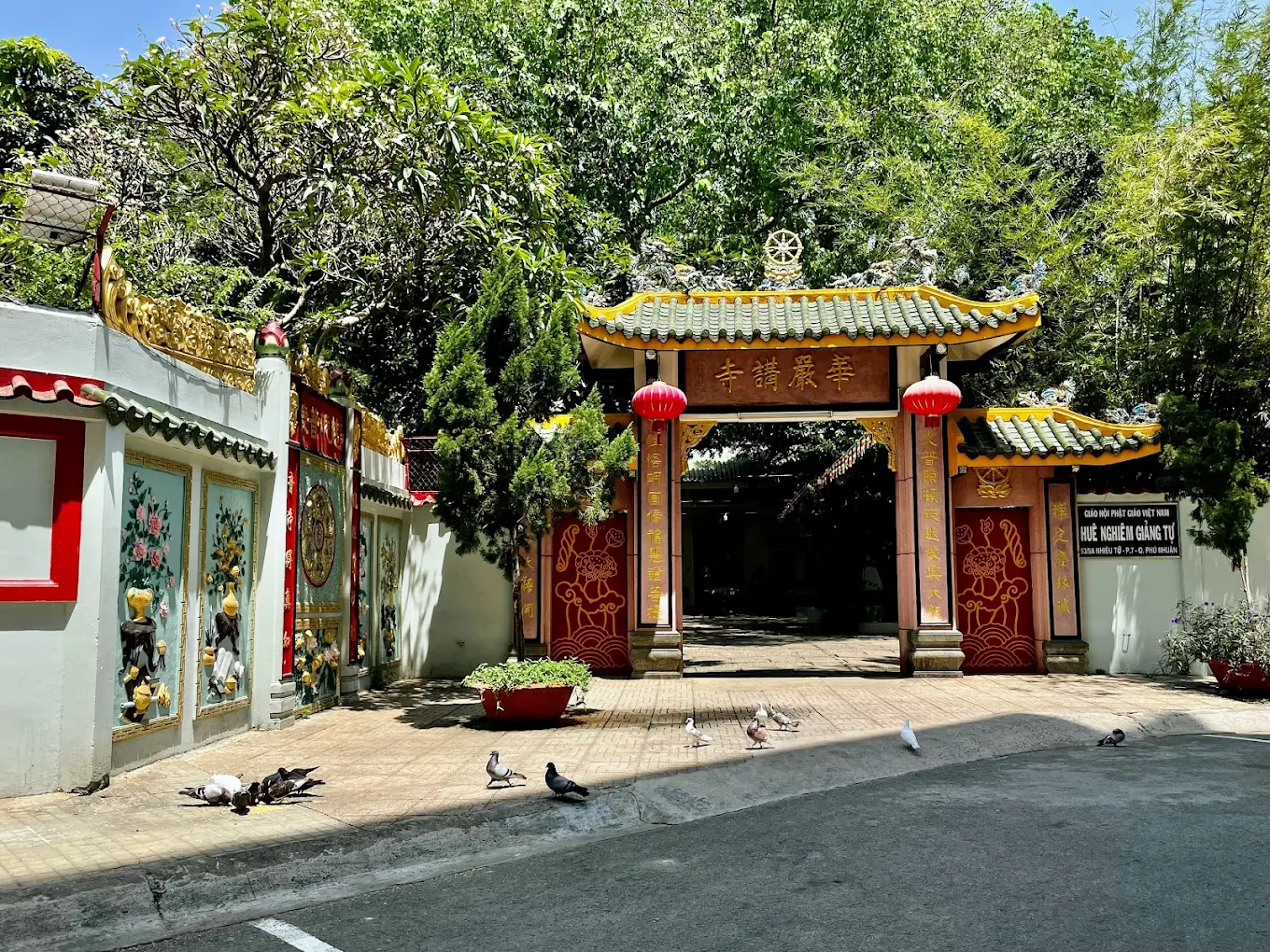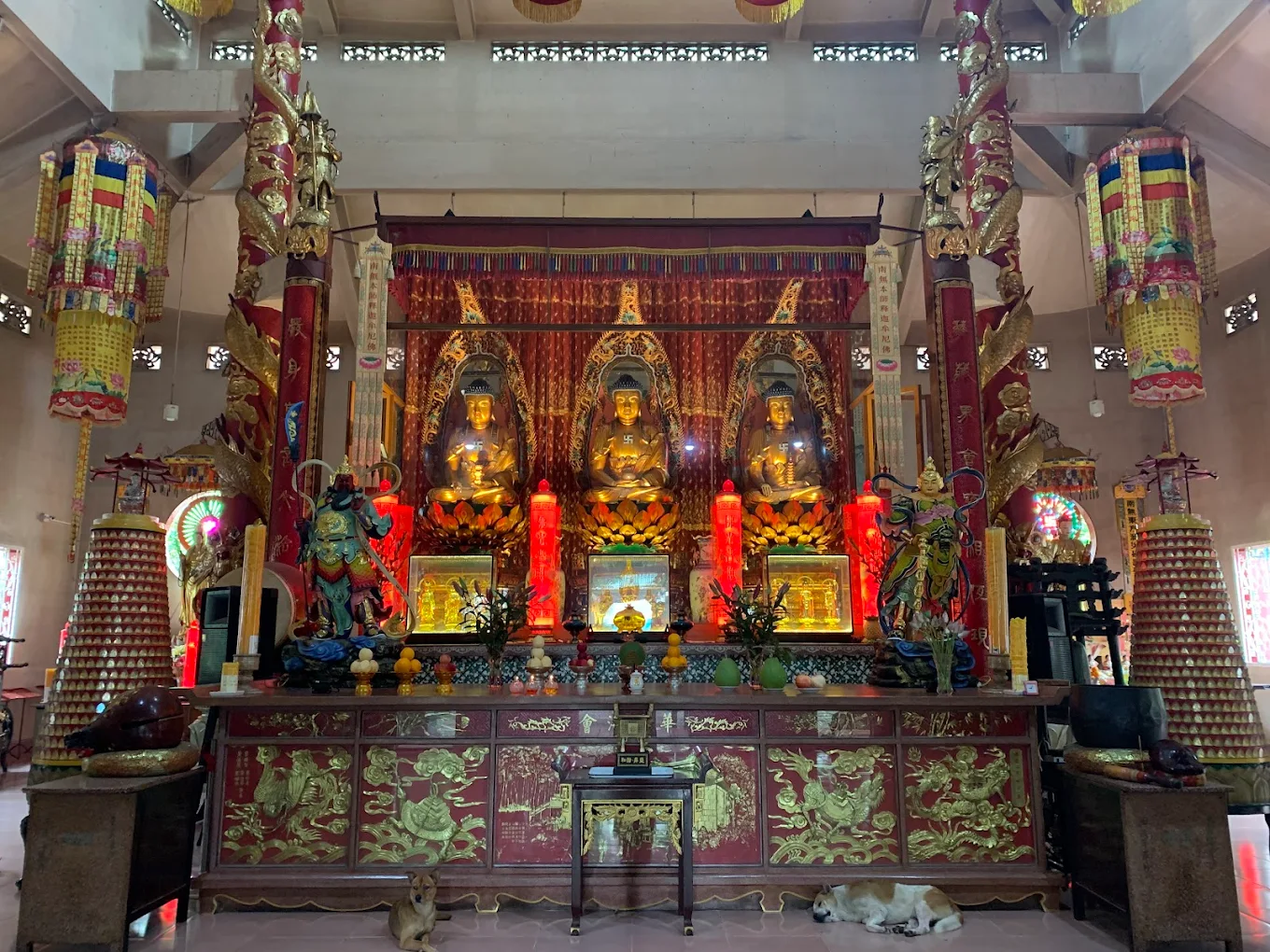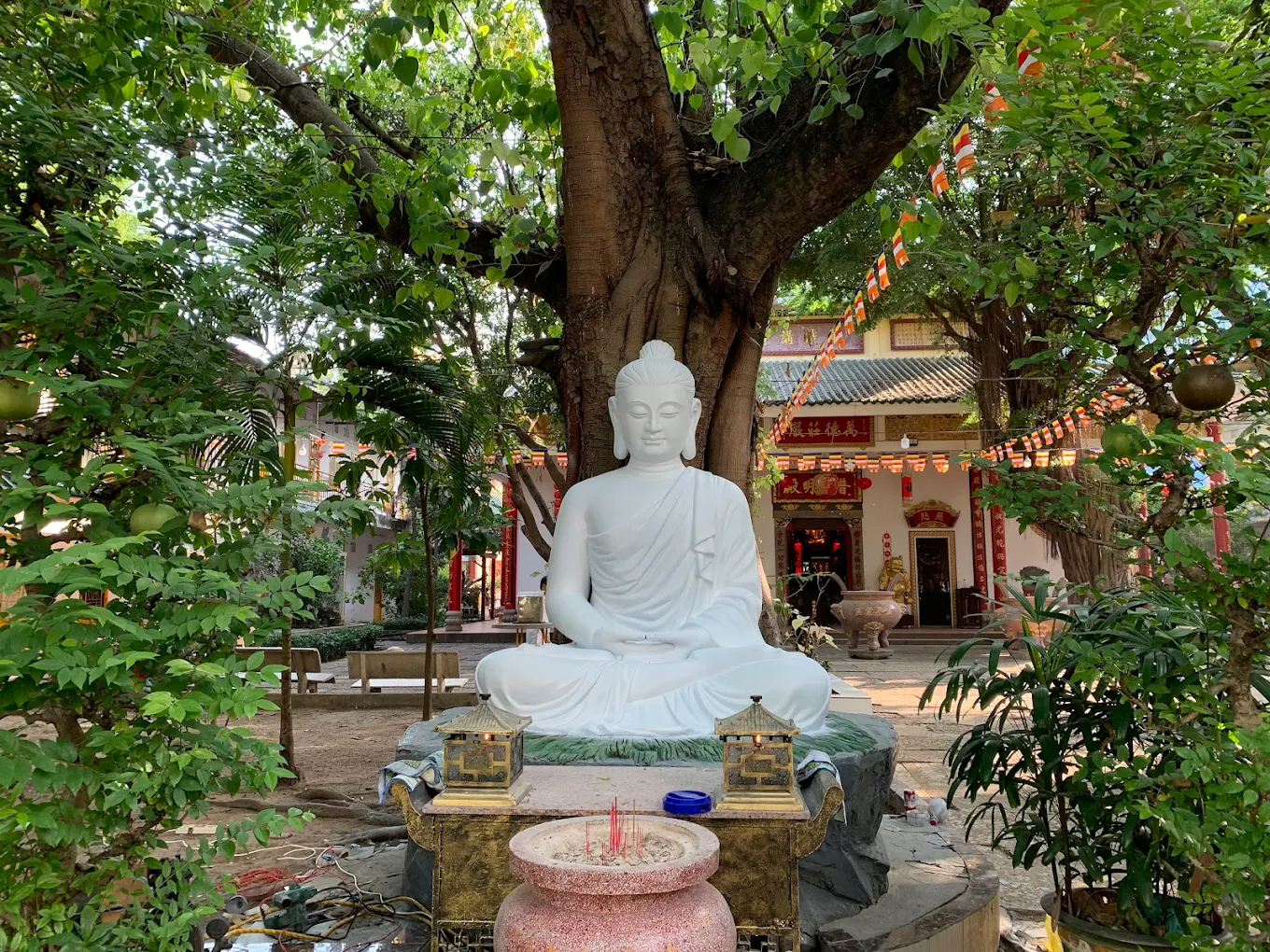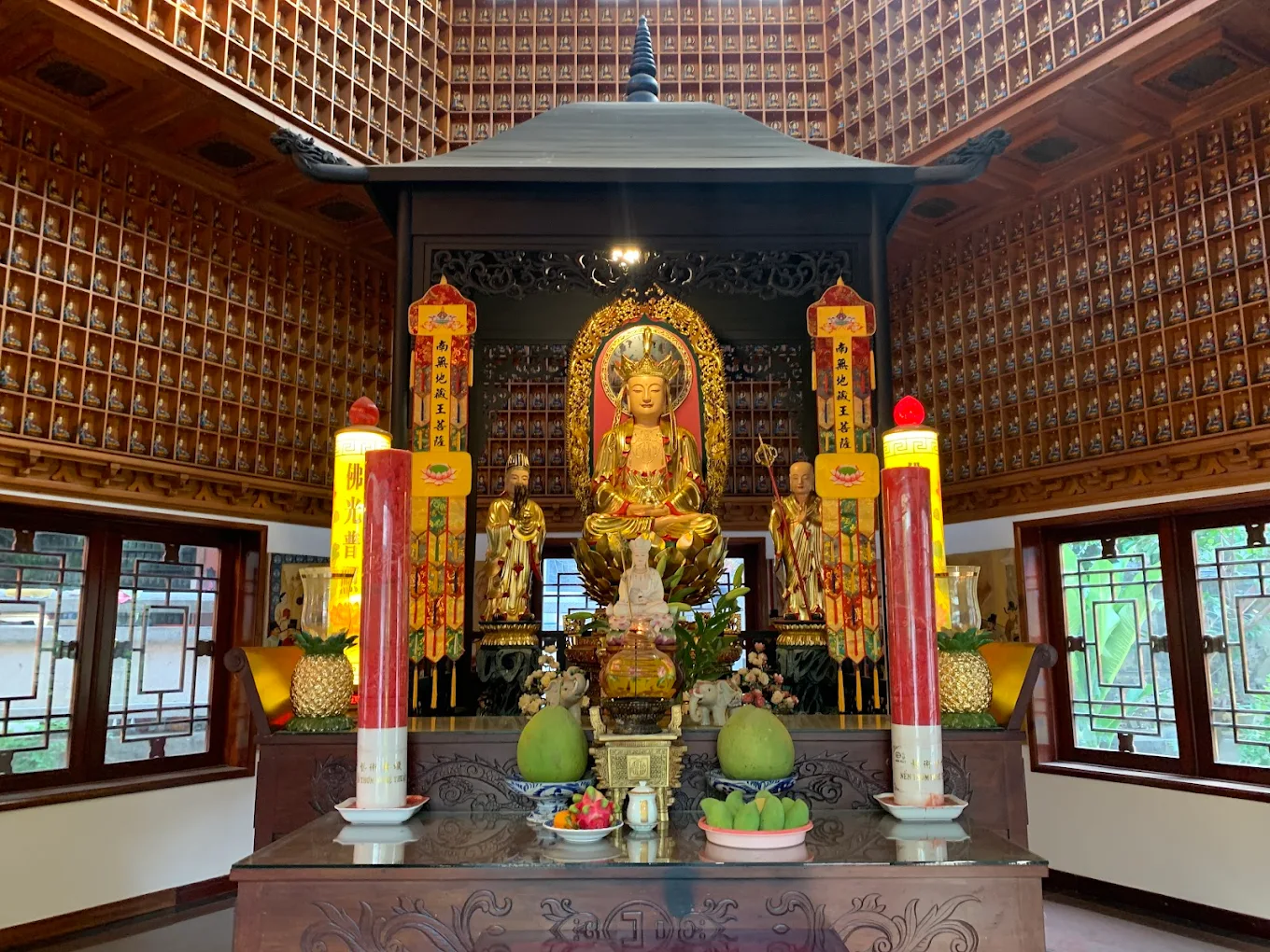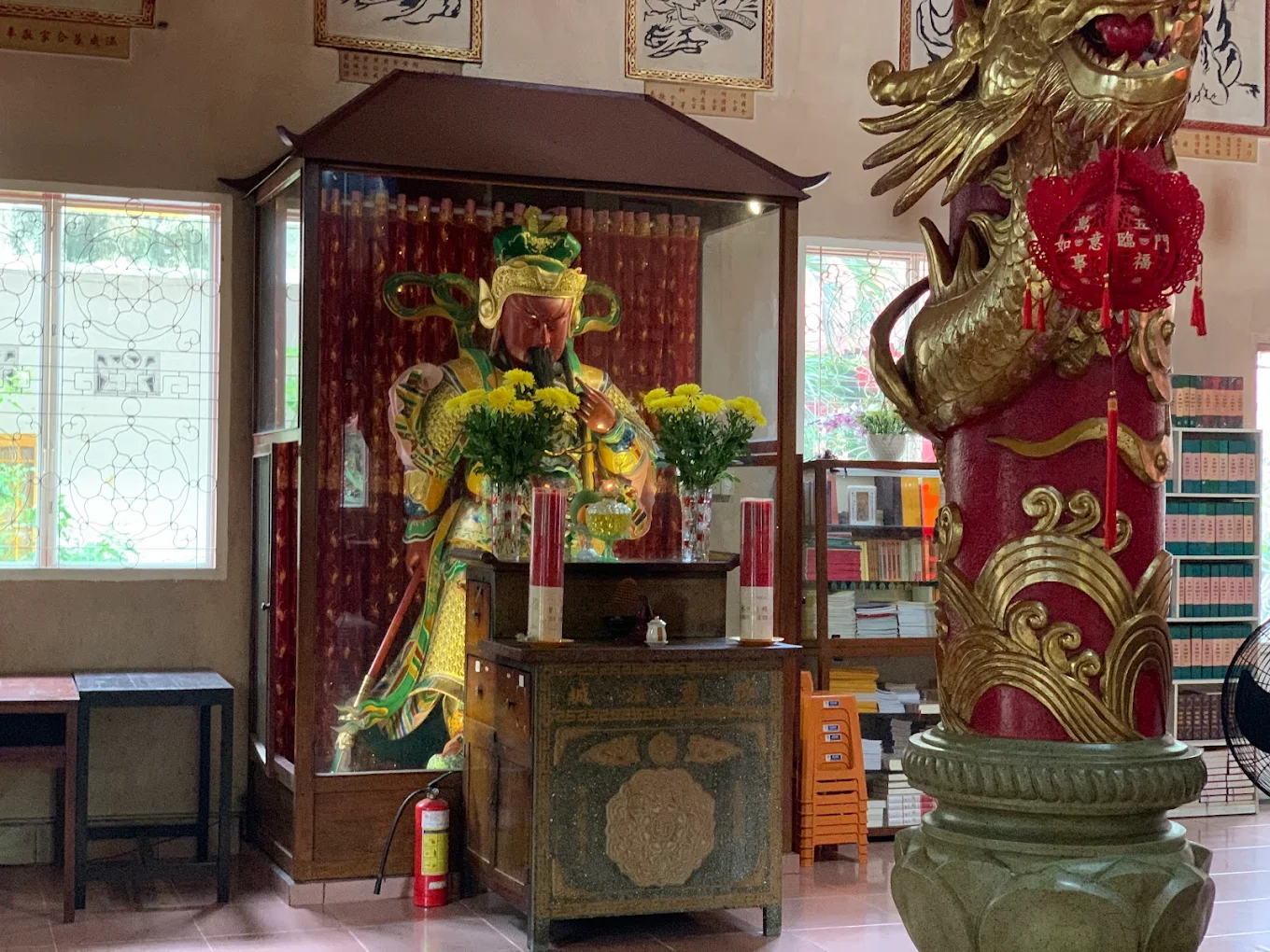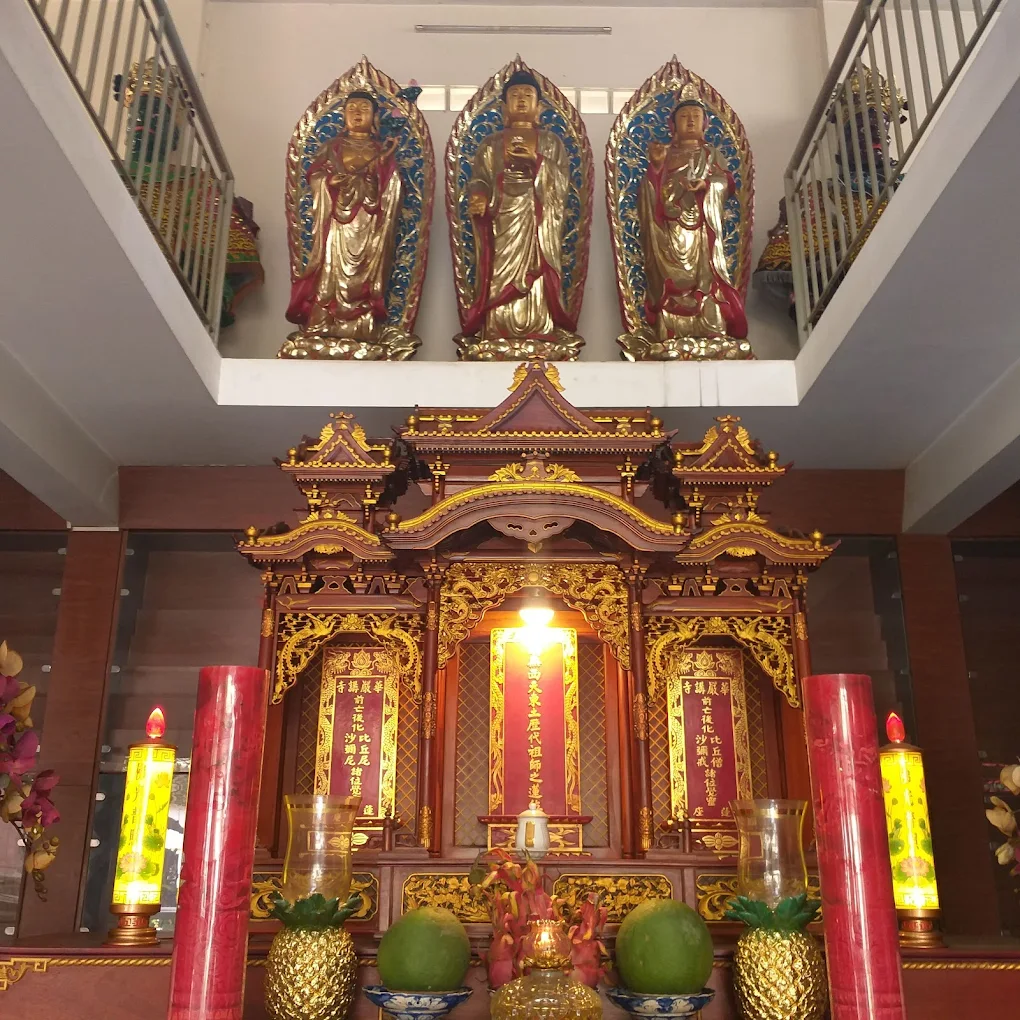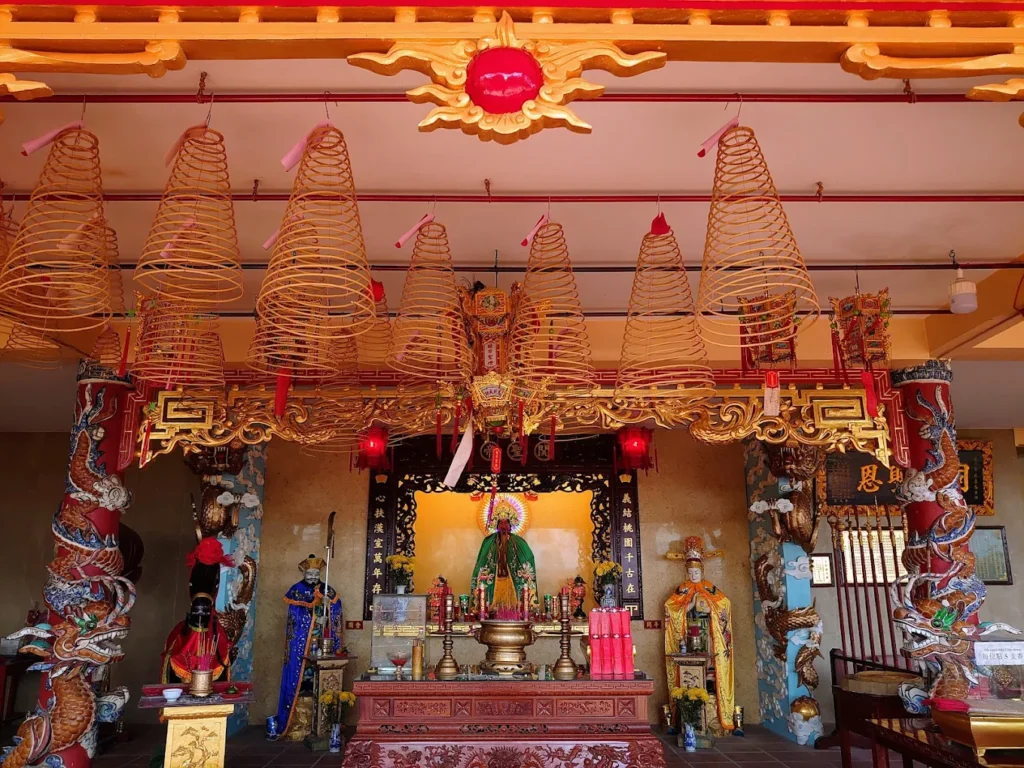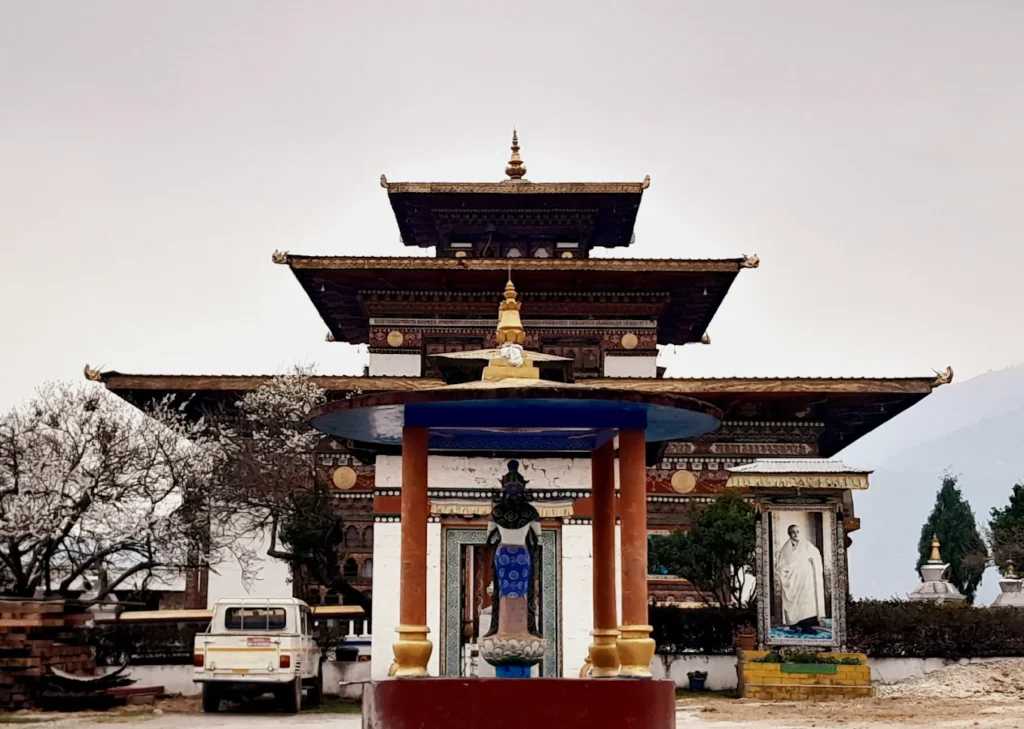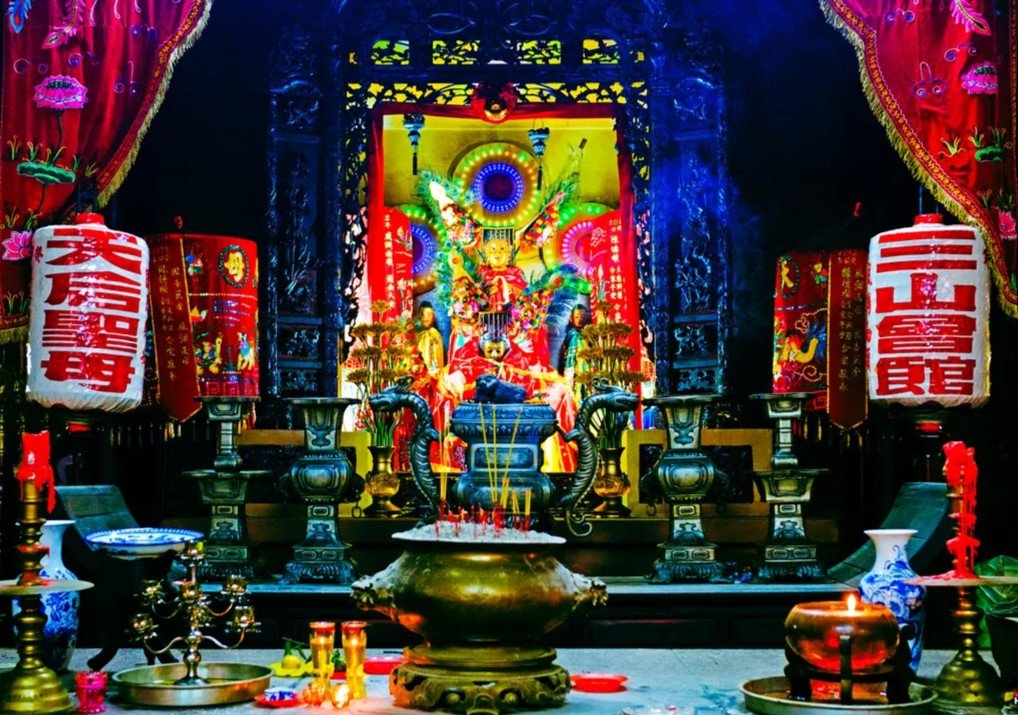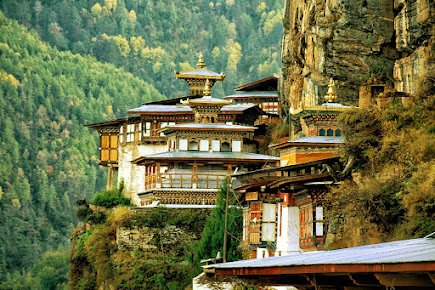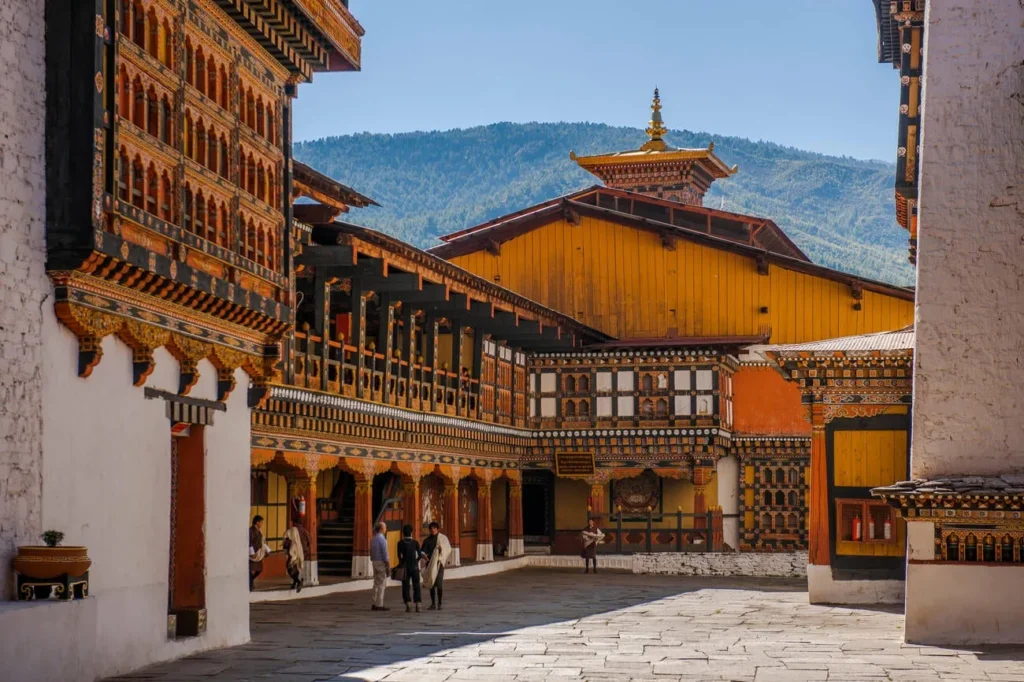Hue Nghiem Giang Tu Pagoda: Saigon’s Beacon of Buddhist Healing
Along the serene banks of the Saigon River in Phú Nhuận District, Hue Nghiem Giang Tu Pagoda (Huê Nghiêm Giảng Tự [Giảng Tự]) glows softly, its tiled roofs reflecting the dawn. Founded in 1954 by Zen Master Thích Thọ Dã, this Mahayana pagoda [chùa] blends Chinese-inspired architecture with Vietnamese devotion. Its Arhat Tower, housing 18 Arhat [La Hán] statues, stands as a symbol of wisdom, while a free acupressure [bấm huyệt] clinic heals ~100 souls daily. Incense drifts through the courtyard as monks chant, drawing locals and travelers to this tranquil haven in Ho Chi Minh City’s Buddhist soul.
Haven of Compassion: Overview and Significance
Hue Nghiem Giang Tu Pagoda, a Mahayana cornerstone in Phú Nhuận, Ho Chi Minh City, merges spiritual devotion with community healing. Its historical roots, cultural vibrancy, and charitable mission make it a vital stop for exploring the Hue Nghiem Pagoda listing.
Historical Roots and Legacy
Built in 1954 by Thích Thọ Dã, who carried Mahayana teachings from China’s Wutai Shan Temple, the pagoda revitalized Buddhist practice in Saigon. Its acupressure clinic, launched in 2017, serves ~100 people daily, offering free healing to the poor. The Hue Nghiem Pagoda listing reflects its enduring role in Vietnam’s Buddhist heritage, rooted in compassion.
- Key Milestones:
- 1954: Founded by Thích Thọ Dã in Phú Nhuận.
- 2017: Acupressure clinic opened, serving the community.
- Ongoing: Hosts daily prayers and healing services.
Cultural and Spiritual Significance
As a Mahayana pagoda, Hue Nghiem emphasizes the Bodhisattva path, with sutra chanting [tụng kinh] and meditation [thiền định] fostering enlightenment. The Arhat Tower’s 18 statues symbolize spiritual attainment, drawing devotees. Its clinic embodies Buddhist compassion, enhancing the Hue Nghiem Pagoda listing’s appeal in Ho Chi Minh City’s spiritual tourism, alongside Jade Emperor Pagoda.
- Cultural Roles:
- Preserves Mahayana traditions through rituals.
- Offers free healing, reflecting Buddhist values.
- Boosts Ho Chi Minh City’s spiritual tourism.
Community and Global Connections
The pagoda unites Phú Nhuận’s residents through prayers and its clinic, serving Buddhists and non-Buddhists alike. Monks guide visitors, fostering cultural exchange, while the Hue Nghiem Pagoda listing draws tourists from Asia and beyond. Its charitable outreach strengthens Saigon’s Buddhist soul, connecting local devotion with global curiosity.
- Community Impact:
- Serves ~100 patients daily via free acupressure.
- Hosts communal prayers, strengthening bonds.
- Attracts global pilgrims, promoting Mahayana heritage.
As the Saigon River glints and incense swirls, Hue Nghiem’s healing legacy invites exploration of its architectural serenity, a cornerstone of the Hue Nghiem Pagoda listing.
Sanctuary of Wisdom: Architectural and Spiritual Features
Hue Nghiem Giang Tu Pagoda’s Chinese-inspired design, crafted in 1954, blends vibrant aesthetics with tranquil functionality. Its riverside setting and sacred relics enhance its appeal, making it a highlight of the Hue Nghiem Pagoda architecture.
Iconic Design and Structures
The pagoda’s upturned tiled roofs and red pillars reflect Chinese influences, harmonizing with Vietnamese Buddhist motifs. The seven-story Arhat Tower, housing 18 Arhat statues, anchors the courtyard, offering serene views of the Saigon River. A prayer hall and acupressure clinic complete the design, blending devotion with service in the Hue Nghiem Pagoda architecture.
- Design Highlights:
- Chinese-style tiled roofs and red pillars.
- Seven-story Arhat Tower with 18 statues.
- Riverside courtyard with Saigon River views.
Sacred Statues and Relics
The main hall likely houses statues of Shakyamuni Buddha [Phật Thích Ca] and Avalokiteshvara [Quán Thế Âm], crafted in bronze and adorned with silks, typical of Mahayana pagodas. The Arhat Tower’s 18 Arhat statues, symbolizing enlightened disciples, inspire reverence. Incense burners amplify the spiritual potency of the Hue Nghiem Pagoda architecture.
- Statue Details:
- Shakyamuni Buddha: Bronze, ~1–2 meters, serene.
- Avalokiteshvara: Bronze, symbolizing compassion.
- 18 Arhats: Stone or wood, in Arhat Tower.
Artistry and Environmental Harmony
Vietnamese artisans crafted frescoes and carvings, using natural pigments for lotus and dragon motifs, rooted in Zennist aesthetics. The clinic’s modern wing reflects practical compassion. The pagoda’s riverside design, with minimal environmental impact, aligns with Vietnam’s Buddhist ethos, enhancing the Hue Nghiem Pagoda listing’s serene allure.
- Artistic Features:
- Lotus and dragon frescoes, painted naturally.
- Carved wooden beams with Buddhist symbols.
- Eco-friendly design, blending with Saigon River.
The pagoda’s serene artistry and healing mission invite exploration of its rituals, a vital part of the Hue Nghiem Pagoda listing’s spiritual depth.
Rhythms of Healing: Rituals and Practices
Hue Nghiem Giang Tu Pagoda pulses with Mahayana rituals, blending sutra chanting, meditation, and healing. Its daily practices and acupressure clinic draw devotees, enriching the Hue Nghiem Pagoda listing’s appeal.
Daily and Unique Rituals
Monks chant the Heart Sutra [Kinh Tâm], a core Mahayana text teaching emptiness, each morning for ~1–2 hours, fostering wisdom. Meditation sessions cultivate mindfulness, open to all. The acupressure clinic, serving ~100 patients daily since 2017, offers free healing, a unique practice blending Buddhist compassion with traditional medicine, central to the Hue Nghiem Pagoda listing.
- Daily Practices:
- Heart Sutra chanting, ~1–2 hours.
- Meditation for inner peace.
- Acupressure clinic, serving ~100 daily.
Festival Traditions
The pagoda likely hosts Vesak [Phật Đản] in April/May, celebrating the Buddha’s birth, enlightenment, and parinirvana with prayers and lamp lightings. These events, distinct from daily rituals, unite Phú Nhuận’s Buddhists, enhancing the Hue Nghiem Pagoda listing’s communal vibrancy.
- Festival Highlights:
- Vesak: Prayers and lamp lightings, April/May.
- Auspicious days: Increased prayer activity.
- Communal gatherings, fostering unity.
Community and Visitor Engagement
The pagoda engages Phú Nhuận through prayers and its clinic, serving diverse residents. Visitors join chanting or acupressure sessions, guided by monks, enriching the Hue Nghiem Pagoda listing. The clinic’s outreach to the poor strengthens community ties, connecting local devotion with global curiosity.
- Engagement Activities:
- Guided chanting sessions, ~20 minutes.
- Acupressure sessions, open to visitors.
- Community outreach via free healing.
The pagoda’s rituals and healing services guide visitors to practical insights, ensuring a seamless journey to its serene grounds.
Journey to Hue Nghiem: Visitor Information
Hue Nghiem Giang Tu Pagoda, a tranquil retreat in Phú Nhuận, offers easy access for those exploring the Hue Nghiem Pagoda listing. Its riverside logistics and nearby attractions make it a must-visit in Ho Chi Minh City.
Navigating the Pagoda
Located at 53/5a Nhiêu Tứ, the pagoda is a 10–15-minute drive from District 1 via Đinh Tiên Hoàng Street. A scenic boat ride across the Saigon River (~100,000 VND round-trip) is an option. The courtyard, marked by the Arhat Tower, is a short walk from the entrance, with limited parking for the Hue Nghiem Pagoda listing.
- Navigation Tips:
- Drive via Đinh Tiên Hoàng to Nhiêu Tứ.
- Opt for a boat ride for scenic views.
- Expect a 5-minute walk from parking or dock.
Practical Details and Etiquette
Open daily from 7 AM to 6 PM, the pagoda has no entry fee, but donations support the clinic. Visitors must dress modestly (shoulders and knees covered), remove shoes in the shrine, and avoid photography inside. Silence phones to respect meditation spaces. The address is 53/5a Nhiêu Tứ, Phường 7, Quận Phú Nhuận, Ho Chi Minh City, vital for the Hue Nghiem Pagoda listing.
- Logistics:
- Address: 53/5a Nhiêu Tứ, Phường 7, Quận Phú Nhuận, Ho Chi Minh City.
- Hours: 7 AM–6 PM, daily.
- Transport: Taxi (
100,000 VND) or boat (100,000 VND). - Etiquette: No indoor photography, dress modestly.
Immersive Experiences and Surroundings
Visitors can light incense (~10,000 VND) or join morning chants, guided by monks, for the Hue Nghiem Pagoda listing experience. Free acupressure sessions are available, best booked early. Nearby, Jade Emperor Pagoda (15-minute drive) and Tan Dinh Market (10-minute walk) offer cultural depth, while the Saigon River invites scenic strolls.
- Immersive Tips:
- Join morning chants for spiritual immersion.
- Try acupressure for a healing experience.
- Visit Jade Emperor Pagoda and Tan Dinh Market.
The pagoda’s serene setting and healing mission invite exploration of its philosophical depth, a highlight of the Hue Nghiem Pagoda listing.
Wisdom of Hue Nghiem: Cultural and Spiritual Insights
Hue Nghiem Giang Tu Pagoda offers profound Mahayana insights, its Arhat Tower and clinic symbolizing wisdom and compassion. Its role in Phú Nhuận’s community enriches the Hue Nghiem Pagoda listing’s appeal.
Philosophical Foundations
Mahayana Buddhism, guiding Hue Nghiem, emphasizes the Bodhisattva ideal—compassionate service for all beings’ enlightenment. The Heart Sutra, chanted daily, teaches emptiness, freeing the mind from delusion. Meditation fosters mindfulness, aligning with Vietnam’s Buddhist ethos, accessible to visitors via monk-led talks, deepening the Hue Nghiem Pagoda listing’s spiritual value.
- Key Concepts:
- Bodhisattva Ideal: Compassion for all beings.
- Emptiness: Core of the Heart Sutra.
Cultural and Symbolic Depth
The Arhat Tower’s 18 Arhat statues symbolize spiritual attainment, inspiring devotees. Lotus motifs and incense burners reflect Vietnamese Buddhist aesthetics, shared during tours. The acupressure clinic embodies compassion in action, linking the Hue Nghiem Pagoda listing to Saigon’s Buddhist soul.
- Symbolic Elements:
- Arhats: Wisdom and enlightenment.
- Acupressure Clinic: Compassionate service.
Community and Environmental Resilience
The pagoda unites Phú Nhuận through prayers and healing, serving ~100 patients daily. Its riverside design, using local materials, aligns with Vietnam’s eco-conscious ethos. Community outreach ensures Buddhist values thrive, enriching the Hue Nghiem Pagoda listing’s cultural significance.
- Resilience Efforts:
- Free clinic, serving the poor.
- Sustainable design, preserving Saigon’s riverside.
The pagoda’s wisdom and compassion invite visitors to experience its serene power, a cornerstone of the Hue Nghiem Pagoda listing.
Why You Have to Get to Hue Nghiem Giang Tu Pagoda
Hue Nghiem Giang Tu Pagoda is a must-visit for its tranquil sanctity and unique Mahayana compassion in Ho Chi Minh City. Built in 1954 in Phú Nhuận, its Arhat Tower with 18 statues radiates wisdom, while its free acupressure clinic heals ~100 souls daily. Morning chants of the Heart Sutra and riverside serenity draw devotees and travelers to Saigon’s Buddhist soul. The Hue Nghiem Pagoda listing beckons seekers, researchers, and pilgrims to discover a sanctuary where faith and healing unite, as incense curls and the Saigon River flows in timeless harmony.
